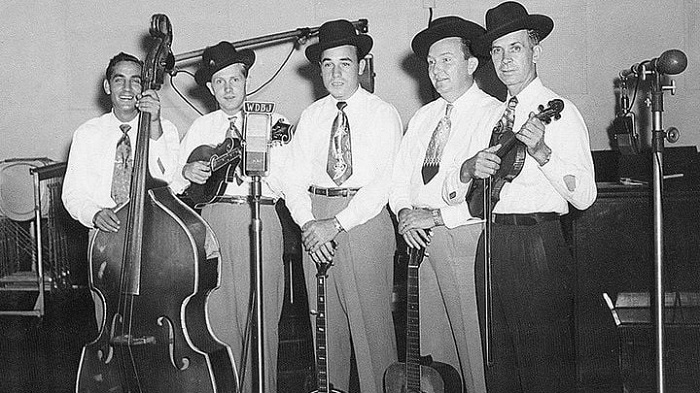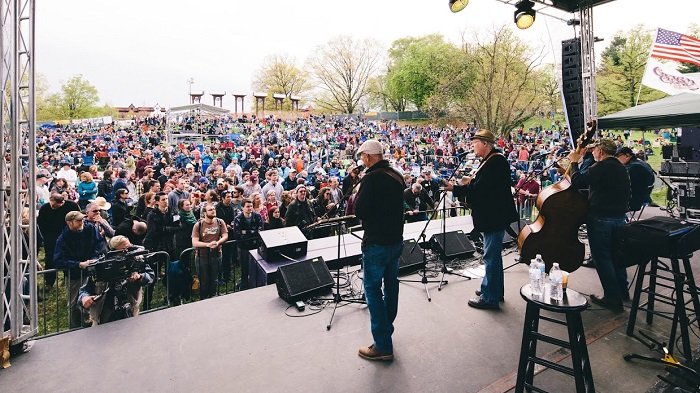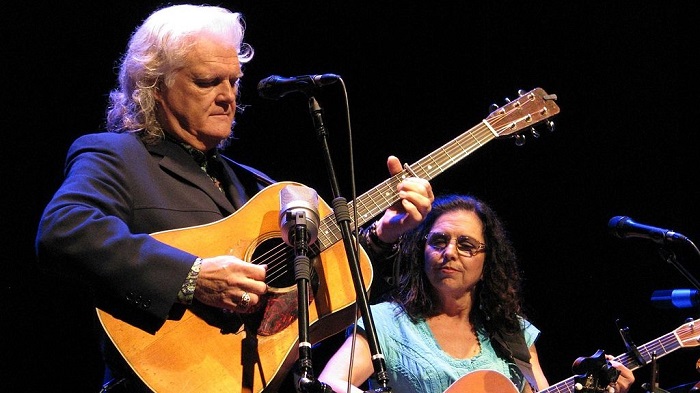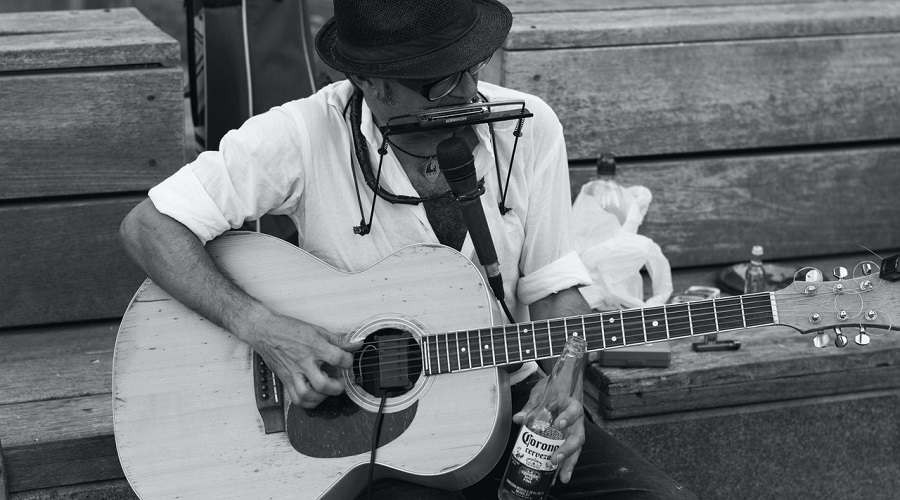According to reports, there are over 18 million bluegrass consumers in the US. 75% of said consumers listen to bluegrass music for entertainment, stating that the genre is an integral part of their identity.
Despite its relative popularity, the distinction between bluegrass music and mainstream country music is less clearly defined in today’s era.
To help clear things up, this article discusses everything you need to know about bluegrass music, from its history to its defining characteristics. What is bluegrass music? Let’s find out!
What Is Bluegrass Music?
Traditionally performed with acoustic stringed instruments, bluegrass music is a musical genre that features off-beat notes, improvised performances, and rapid tempos. It was developed in the late 1930s in the Appalachian region of the United States.
History of Bluegrass Music
The origins of bluegrass music can be traced back to the 1600s, brought upon by individuals who migrated to the US from Scotland, England, and Ireland.
As they settled into North and South Carolina, Virginia, and Kentucky, they wrote songs about their daily life in the new country to pass the time. Since most of them lived in rural and/or remote areas, the songs primarily focused on farming and similar agriculture.
With that said, bluegrass music was only popularized in the early-to-mid 1900s, thanks to the brilliant invention of the phonograph. Upon its establishment, the range of bluegrass music expanded from remote hills to multiple homes in the United States.
The 1930s
The musical foundation of bluegrass music was shaped by a native of Rosine, Kentucky: Bill Monroe. Today, he’s dubbed as the “Father of Bluegrass Music.”
As a young child, Monroe loved singing and fiddling with the guitar. His mother, Malissa Vandiver Monroe, and her brother, Pendleton “Pen” Vandiver, were musically talented. So they taught him how to play various instruments, including the fiddle, guitar, and mandolin.

In 1929, Bill, accompanied by his brothers Birch and Charlie, moved to Indiana to work at an oil refinery. Even though they’re miles away from home, their love for music didn’t falter. Together, they created a band called the “Monroe Brothers” to keep their passion alive.
Apart from the brothers themselves, the band consisted of two of Bill’s childhood best friends: William “Old Hickory” Hardin and Larry Moore.
Whenever they were free, they performed at local dances and house parties for a small fee. They sang in harmony while Bill (begrudgingly) played the mandolin and Charlie played the guitar. This event marked the beginning of bluegrass music.
The early 1940s
In 1938, the members of the band went their separate ways. However, bill wasn’t deterred, unwilling to let go of his passion.
Bill and Charlie carried on as a duo, adopting the name “Bill Monroe and the Blue Grass Boys.” This decision proved to be worth it, as their band sparked a new form of “traditional” country music: bluegrass.
Upon the establishment of Bill’s new band, they started performing across several nearby states. Finally, in 1939, the band appeared on the Grand Ole Opry stage, which soon became among the most popular acts from WSM studios in Nashville.
Eventually, they began performing on live radio stations, spanning from Indiana all the way to South and North Carolina.

Bill and his band were praised for their hard-driving and powerful performance, which, at the time, was completely different from other traditional country bands.
Bill’s music incorporated several genres, including black and white gospel, country, blues music, and black laborer work songs.
In addition to Bill’s “high lonesome” lead singing, the vocals included a range of duet, trio, and quartet harmony. After experimenting with several musical instruments, Bill settled on five of his favorites: banjo, fiddle, guitar, mandolin, and bass.
The late 1940s
The birth of bluegrass is often debated among bluegrass enthusiasts. Some believe the genre first came into fruition on the Grand Ole Opry in 1939, while others believe that the classic sound of authentic bluegrass came together when Earl Scruggs joined the band in 1945.
Earl Scruggs was a talented 21-year-old American man from North Carolina. Scruggs is widely known for inventing a three-finger banjo picking style, which he dubbed as the “Scruggs style.” Later, the Scruggs style became a defining characteristic of bluegrass music.
In 1948, Earl Scruggs and Lester Flatt, both members of the Bluegrass Boys, formed their group. They called it “The Foggy Mountain Boys.”
Scruggs and Flatt used most of their former band’s musical characteristics, but they also used a resonator guitar called the Dobro in their songs. As a result, most bluegrass songs of today use the Dobro.
The 1950s to 1970s

From 1948 to 1969, The Foggy Mountain Boys was a force to be reckoned with. The band introduced bluegrass music across all American states through radio, national television, and appearances in major universities, schoolhouses, and coliseums.
“Foggy Mountain Breakdown,” written by Earl Scruggs, is considered among the most popular bluegrass songs of American history. It’s the very same song that established the banjo as the star instrument in the genre.
In 1967, the song was used in the soundtrack of the ever-famous film Bonnie & Clyde, introducing the genre to a broader audience worldwide.
The Bluegrass Festival was first established in the 1960s.
Carlton Haney, an American booking agent, and festival promoter produced the first-ever weekend-long Bluegrass Music Festival in 1965.
Bill, who was still a significant name in the bluegrass genre, founded the annual Bill Monroe Bean Blossom Bluegrass Festival in southern Indiana in 1967. The festival routinely attracted thousands of viewers.
Today, it’s the world’s oldest continuously running bluegrass festival, with fans traveling long distances to participate in the annual event.
1980s to 2000s

As pop music and rock dominated the music industry, bluegrass music slowly faded in the early 1980s. Even so, bluegrass music left a loyal audience. As a result, Bluegrass Festivals are still as popular as ever.
The 1980s introduced a new age of bluegrass, which many called the “third generation.” Third-gen bluegrass saw some notable changes, primarily in the form of high-quality sound equipment.
Lead-guitar playing became more elaborate, following the example set by bluegrass musician Tony Rice. In addition, electric bass became an accepted alternative to the traditional acoustic bass.
Non-traditional forms of chord progressions also appeared in several 1980s bluegrass compositions.
On September 9, 1996, four days before his 85th birthday, Bill Monroe passed away. His death sparked new interest in the bluegrass genre, crossing over to mainstream media as it was introduced to the younger generation.
Country music superstars Mart Stuart, Patty Loveless, and Dolly Parton also released several bluegrass albums.
In 2006, Alison Krauss, an American bluegrass country singer, won 20 Grammy Awards—the most of any female artist in history. In addition, Krauss’s triple-platinum soundtrack was used in the movie “O Brother, Where Art Thou?” attracting an even wider audience to the genre.
Bluegrass vs. Country: What’s the Difference?

Bluegrass and country share several musical qualities, so much so that most people classify them as one. However, bluegrass and country are two completely separate genres with their own set of unique characteristics.
It’s important to note that bluegrass music is a subgenre of country music. Before the term “bluegrass” was coined, the genre was called country music, old-time music, or mountain hillbilly music.
Due to this, those who are unfamiliar with the subgenres of country music simply called bluegrass “country.”
It’s pretty similar to how they’d categorize traditional and folk music; while both fall in similar categories, traditional music encompasses folk music. Here, country music encompasses bluegrass music.
For the sake of this comparison, we’re going to compare mainstream country music as its own genre rather than a broad category that includes several other genres. So here are the primary differences between mainstream country music and bluegrass music:
Instrumentation

Country and bluegrass mostly use the same instrumentation. As you may have already known, the banjo is one of the most defining instruments of both genres. The same is said for the harmonica and the fiddle.
However, some instruments are more commonly used in one genre or the other. For instance, accordions are pretty popular in country music. Bluegrass artists also use accordions in their compositions, but they aren’t as common as the former.
Bluegrass music makes use of unamplified acoustic instruments. For this reason, bluegrass music is closely associated with folk music. Examples of these instrumentals include:
- Acoustic guitar
- Fiddle
- Mandolin
- Banjo
- Dobro
- Upright Bass
Likewise, play styles differ on the instruments:
- Three-finger picking on the banjo
- Flat-picking on the guitar
- Thirds and fifths fiddling on the fiddle

In addition to acoustic instruments, most bluegrass music uses multiple vocal harmonies rather than individual vocals, further emphasizing instrumental showmanship. As opposed to country music, instrumental solos are a common theme in bluegrass music.
Country music, on the other hand, uses electric instruments alongside acoustic instruments. Examples include:
- Electric guitar
- Steel guitar
- Electric bass
- Drums
Compared to bluegrass, where instrumental showmanship is the show’s main star, country music focuses more on lyrics and storytelling.
Composition-wise, country music is almost always perfectly structured, from the beginning to the end. Bluegrass is often improvised for the sake of entertainment and authenticity.
Rhythm and Sound
Bluegrass and country are likewise defined by their rhythm, sound, and how the instruments are used. The musical characteristics of bluegrass and countryside are easily distinguishable when played side by side.
Bluegrass music is well-known for its complex musical structures. Conversely, country music primarily consists of structured rhythms.

When it comes to writing and performance, country music more or less sticks to similar setups. Also, country music often has a particular twang sound to it, both in its singers and its instruments.
The distribution of both genres is different, as well. Nowadays, country music is often associated with pop culture and pop music. As it’s more popular than bluegrass music, country music has the support of the music industry, therefore making it more accessible to the public.
Bluegrass music sticks to its roots. For the lack of a better term, it’s more down-to-earth.
It keeps to its origins and sound. Due to this, bluegrass rarely follows mainstream demand.
Origins
Bluegrass is influenced by a variety of musical genres, including:
- Blues
- Traditional and fusion jazz
- Old-time music
- Celtic music
- Contemporary country music
- Rock-‘n’-roll
- Southern gospel music
Country music is inspired by much of the same, except for a few notable differences:
- American pop music
- American folk music
- French folk music
- African-American music
Artists and Songs

One of the easiest ways to differentiate bluegrass and country is through their musicians. Bill Monroe—the Father of Bluegrass—is among the most significant predecessors of the genre. The same goes for Earl Scruggs, Ricky Skaggs, Alison Krauss, and Eris Weissberg.
If you have several minutes to spare, I encourage you to listen to “Blue Moon of Kentucky” by Bill Monroe, “Country Boy” by Ricky Skaggs, and “Foggy Mountain Breakdown” by Earl Scruggs. These songs are the very essence of bluegrass music.
As for country music, some of the most notable singers include Dolly Parton, Johnny Cash, and Willie Nelson, with their songs “Jolene,” “Hurt,” and “On the Road Again,” consecutively.
Bluegrass Music Subgenres
Although bluegrass has significantly shifted over the past 80 years or so, two significant subgenres have dominated the scene since its creation: traditional bluegrass and progressive bluegrass.
Traditional Bluegrass
As you may have expected, traditional bluegrass stems from the traditional elements of classic 1940s bluegrass.
Musicians of this genre mostly play folk songs and simple I-IV-V chord progressions. They’d also use traditional acoustic instruments that were used in the early years of bluegrass: banjo, harmonica, acoustic guitar, fiddle, etc.

Unlike progressive bluegrass, traditional bluegrass guitarists rarely take the lead and would instead focus on the composition’s overall rhythm.
Alongside traditional chord patterns, the melodies and lyrics of traditional bluegrass are usually simple and straightforward.
Progressive Bluegrass
Progressive bluegrass, otherwise known as newgrass, is the contemporary version of traditional bluegrass.
Progressive bluegrass surged in popularity in the early 1970s when bluegrass groups began introducing songs from other genres (mainly rock-‘n’-roll).
With that said, many believe that progressive bluegrass traces back to one of the bluegrass bands that first made it to fame: The Foggy Mountain Boys.
The four distinguishing elements of progressive bluegrass include the following:
- Instrumentation (electric instruments, piano, drums, etc.)
- Imitated or imported songs from other genres
- Wild chord progressions
- Lengthy improvisation of the jam-band style







